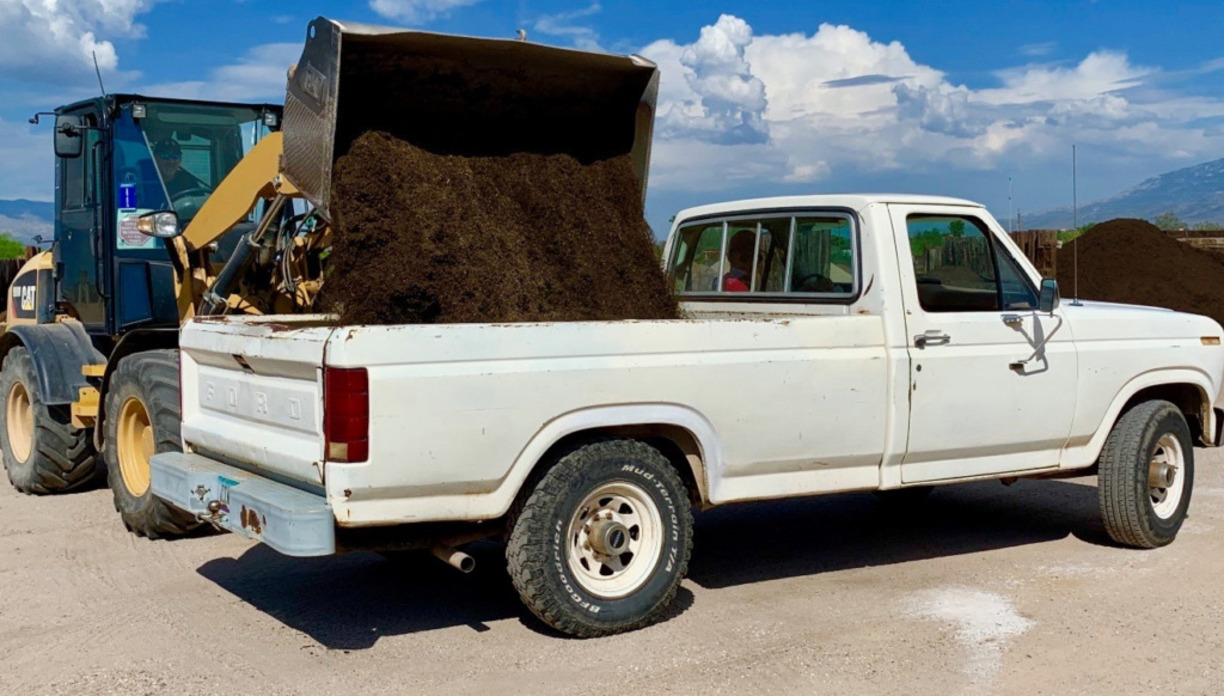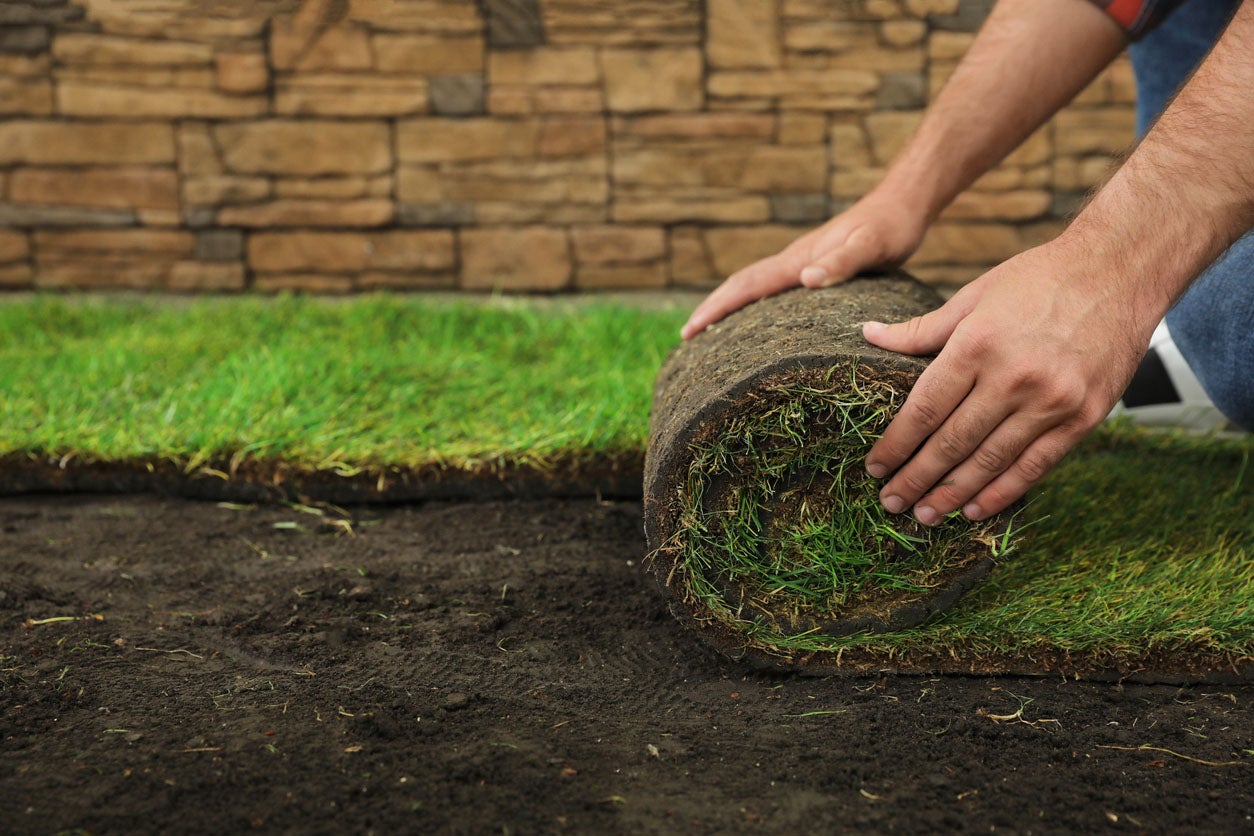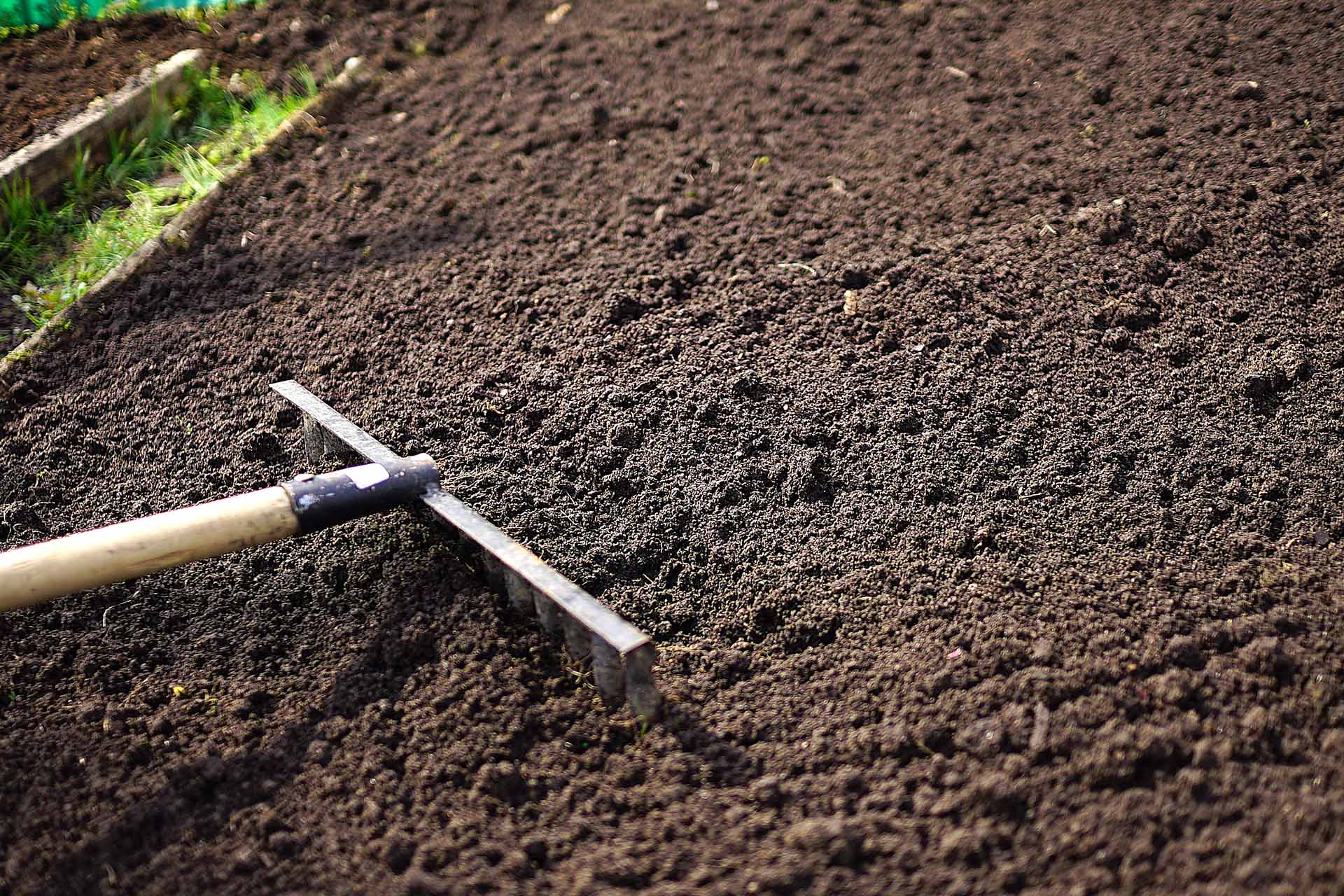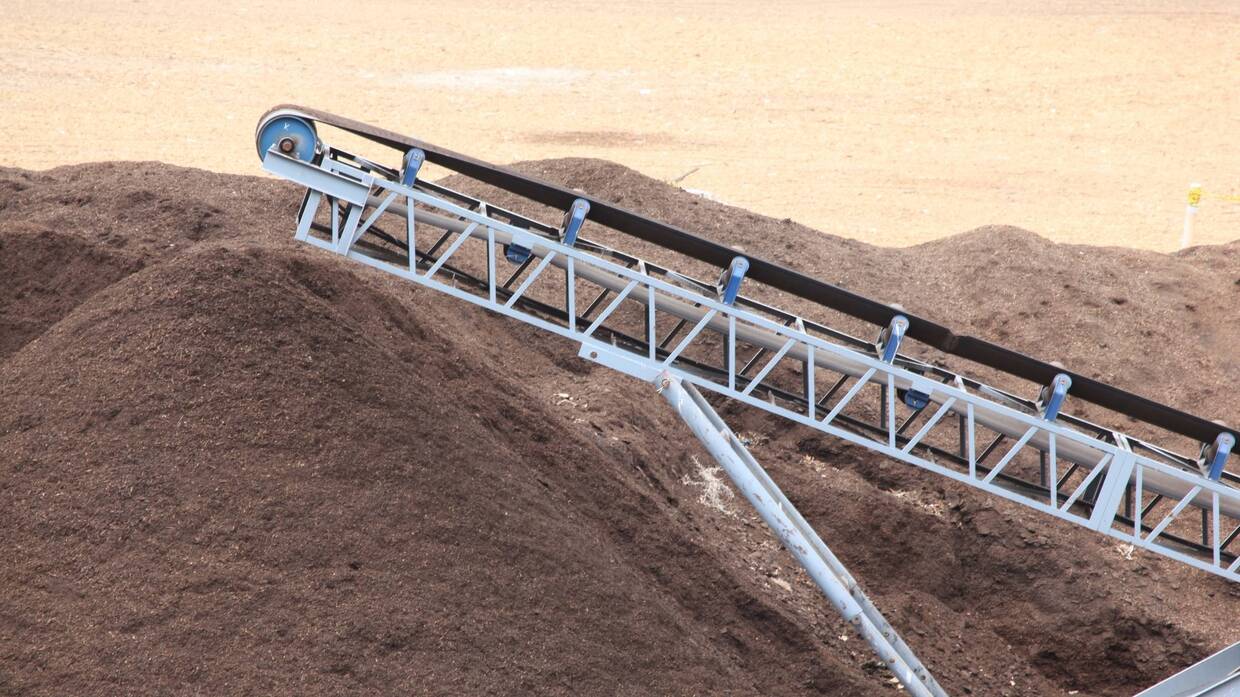Home>Gardening Basics>Understanding Soil>How Much Topsoil Can A Pickup Truck Hold


Understanding Soil
How Much Topsoil Can A Pickup Truck Hold
Published: November 23, 2023
Discover the answer to "how much topsoil can a pickup truck hold" and gain a better understanding of soil. Learn more about topsoil capacity and its impact on your gardening and landscaping projects.
(Many of the links in this article redirect to a specific reviewed product. Your purchase of these products through affiliate links helps to generate commission for Chicagolandgardening.com, at no extra cost. Learn more)
Table of Contents
Introduction
Welcome to our comprehensive guide on understanding the capacity of a pickup truck when it comes to transporting topsoil. If you’re embarking on a gardening or landscaping project and need to transport topsoil, it’s important to know just how much your pickup truck can hold. By understanding the factors that affect topsoil capacity and learning how to calculate the volume of topsoil, you can ensure that your project runs smoothly and efficiently.
Topsoil is a vital component for any gardening or landscaping endeavor. It provides essential nutrients, retains moisture, and supports the healthy growth of plants. Whether you’re preparing a flower bed, laying a new lawn, or rejuvenating your garden, having the right amount of topsoil is crucial.
However, when it comes to transporting topsoil, it’s essential to consider the capacity of your pickup truck. It’s not just about fitting the topsoil in your truck bed but also ensuring that you don’t overload it, as this can lead to safety concerns and potential damage to your vehicle.
In this guide, we’ll dive into the various factors that affect the capacity of a pickup truck for carrying topsoil. We’ll also provide helpful tips on calculating topsoil volume and loading it into your truck effectively. By the end of this article, you’ll have a comprehensive understanding of how much topsoil your pickup truck can hold and how to transport it safely and efficiently.
Understanding Topsoil
Before delving into the capacity of a pickup truck for transporting topsoil, it’s important to have a good understanding of what topsoil actually is. Topsoil is the uppermost layer of soil on the Earth’s surface, typically ranging from 2 to 8 inches in depth.
This layer of soil is where most of the nutrients and organic matter needed for plant growth are found. Topsoil is rich in humus, which is decomposed organic material, as well as minerals and microorganisms that play a vital role in supporting plant life.
The composition of topsoil can vary depending on various factors such as location, climate, and land management practices. Generally, it consists of a combination of sand, silt, clay, and organic matter. The ideal balance of these components is important for proper drainage, water retention, and nutrient availability for plants.
When it comes to gardening and landscaping projects, having high-quality topsoil is essential for creating a healthy and thriving environment for your plants. It provides a fertile base that allows roots to penetrate and access the necessary nutrients and moisture.
In addition to its nutrient-rich composition, topsoil also plays a crucial role in soil erosion prevention. The topsoil layer acts as a protective cover against wind, rain, and other elements, preventing soil loss and the disruption of the ecosystem.
Now that we have a basic understanding of what topsoil is and its importance, let’s move on to understanding the capacity of a pickup truck for transporting this valuable resource.
Capacity of a Pickup Truck
The capacity of a pickup truck for carrying topsoil depends on several factors. The most important factor is the size of the truck bed, which can vary depending on the make and model of the vehicle. Common sizes for pickup truck beds include 5.5 feet, 6.5 feet, and 8 feet in length.
Typically, a full-size pickup truck can handle a payload of around 1,500 to 3,000 pounds, depending on its configuration and specifications. However, it’s important to note that this weight capacity includes not only the topsoil but also the weight of any additional equipment, passengers, and cargo in the vehicle.
When it comes to calculating the volume of topsoil a pickup truck can hold, it’s important to consider the height, width, and length of the truck bed. Multiply these three dimensions together to obtain the total volume in cubic feet. This will give you an estimate of how much topsoil your pickup truck can carry.
For example, let’s say you have a pickup truck with a bed size of 6.5 feet in length, 5 feet in width, and 2 feet in height. Multiplying these dimensions together (6.5 x 5 x 2) gives you a total volume of 65 cubic feet. Keep in mind that this is the maximum capacity, and you should never exceed the weight limits specified by the manufacturer.
It’s important to remember that topsoil can be quite heavy, especially when wet. On average, topsoil weighs around 2,000 pounds per cubic yard. Therefore, if you have a pickup truck with a capacity of 65 cubic feet, this would translate to approximately 2.4 cubic yards of topsoil, weighing around 4,800 pounds.
Understanding the capacity of your pickup truck is crucial to ensure safe and efficient transportation of topsoil. Overloading your truck can lead to safety hazards and cause damage to your vehicle. Before loading topsoil into your pickup truck, it’s advisable to consult the owner’s manual or contact the manufacturer to determine the specific weight capacity and limitations of your vehicle.
Factors Affecting Topsoil Capacity
When it comes to the capacity of a pickup truck for carrying topsoil, there are several factors that can affect how much topsoil your truck can safely transport. Understanding these factors will help you make informed decisions and avoid overloading your vehicle.
1. Truck Bed Size: The size of your pickup truck bed is a crucial factor in determining its topsoil capacity. Different truck models come with varying bed lengths and widths. The longer and wider the bed, the more topsoil it can accommodate. It’s important to measure your truck bed dimensions and calculate the volume accordingly.
2. Gross Vehicle Weight Rating (GVWR): Every pickup truck has a specified Gross Vehicle Weight Rating, which is the maximum weight that the vehicle can handle, including passengers, cargo, and the weight of the truck itself. Exceeding the GVWR can put undue strain on the vehicle’s suspension, brakes, and other components. It’s essential to know your truck’s GVWR and factor that into your topsoil capacity calculations.
3. Payload Capacity: The payload capacity refers to the maximum weight that the truck bed can safely carry. It includes not only the weight of the topsoil but also any additional materials, equipment, or passengers. Be sure to consider the payload capacity and distribute the weight evenly to avoid imbalances that can affect the vehicle’s stability and performance.
4. Weight of the Topsoil: Topsoil can vary in weight depending on its moisture content. Wet topsoil will be heavier than dry topsoil. It’s important to consider the weight of the topsoil when calculating the volume your truck can carry. Remember that exceeding the weight limits can have a negative impact on the vehicle’s handling and safety.
5. Other Considerations: Apart from the truck characteristics, other factors to keep in mind include the distance of the transportation, road conditions, and handling capabilities. If you are traveling long distances or through rough terrain, you might need to adjust your topsoil volume to account for the potential strain on your pickup truck.
By considering these factors, you can determine the topsoil capacity of your pickup truck more accurately. It is crucial to prioritize safety and follow the manufacturer’s guidelines to ensure the proper weight distribution and safe transportation of topsoil.
Calculating Topsoil Volume
Calculating the volume of topsoil is essential to determine how much your pickup truck can hold. By accurately calculating the volume, you can ensure that you don’t overload your vehicle and maintain a safe and balanced load.
To calculate the volume of topsoil, you need to measure the length, width, and height of the truck bed in feet. Multiply these three dimensions together to obtain the total volume in cubic feet. Keep in mind that the measurements should be taken at the highest point of the bed, as the topsoil may not fill the entire bed evenly.
For example, let’s say you have a pickup truck with a bed length of 6.5 feet, a width of 5 feet, and a height of 2 feet. Multiplying these dimensions together (6.5 x 5 x 2) gives you a total volume of 65 cubic feet.
It’s important to note that topsoil is often sold by the cubic yard. To convert the volume from cubic feet to cubic yards, divide the total volume by 27. In the example above, 65 cubic feet divided by 27 equals approximately 2.41 cubic yards of topsoil.
Another factor to consider when calculating topsoil volume is compaction. Topsoil can become compacted, reducing its overall volume. If you’re taking measurements after the topsoil has settled or been compacted, you may need to add a little extra to compensate for the reduced volume.
It’s important to be as accurate as possible when calculating the topsoil volume to avoid overloading your pickup truck. Always keep in mind the weight limits and payload capacity, which should be specified in your vehicle’s owner’s manual or obtained from the manufacturer.
By following these steps and considering any potential compaction, you can accurately calculate the volume of topsoil your pickup truck can hold. This will help ensure a safe and efficient transport without exceeding the truck’s capacity.
Tips for Loading Topsoil into a Pickup Truck
When it comes to loading topsoil into your pickup truck, there are several tips and best practices to keep in mind. By following these tips, you can ensure a smooth and efficient loading process while maintaining the safety of yourself and your vehicle.
1. Prepare the Truck Bed
Before loading topsoil, clean out any debris or loose materials from the truck bed. Remove any accessories or obstructions that may hinder the loading process. This will provide a clean and clear area for the topsoil to be placed.
2. Use a Tarp or Liner
To protect your truck bed from scratches and prevent topsoil from spilling out, consider using a tarp or liner. Lay the tarp or liner at the bottom of the truck bed before loading the topsoil. This will make it easier to unload the topsoil and minimize the mess.
3. Load in Layers
When loading topsoil, it’s important to distribute the weight evenly to maintain stability. Rather than dumping the topsoil all at once, load it in layers. Start with a thin layer at the bottom of the truck bed and gradually build up. This will help distribute the weight and prevent the topsoil from shifting during transportation.
4. Compact the Topsoil
As you load the topsoil, gently compact it with a rake or shovel. This will help ensure a more efficient use of space and minimize any air pockets. However, be cautious not to compact the topsoil too tightly, as it may affect its ability to retain moisture and support root growth.
5. Secure the Load
Once the topsoil is loaded, secure the load with tie-downs or straps to prevent it from shifting while driving. Make sure the load is tightly secured to maintain the balance and stability of your pickup truck. Check the load periodically during transportation to ensure that it remains secure.
6. Drive with Caution
When transporting topsoil, drive attentively and cautiously. Be aware of the increased load and adjust your driving accordingly. Take extra care when braking, accelerating, and taking turns. Following these precautions will help ensure a safe and smooth journey.
By following these tips, you can ensure that loading topsoil into your pickup truck is a hassle-free and safe process. Always prioritize safety and consult your vehicle’s owner’s manual for any specific loading recommendations from the manufacturer.
Conclusion
Understanding the capacity of your pickup truck for transporting topsoil is crucial for any gardening or landscaping project. By considering factors such as truck bed size, weight limits, and payload capacity, you can determine the volume of topsoil your truck can safely hold.
Topsoil plays a vital role in providing the necessary nutrients and support for healthy plant growth. By accurately calculating the volume of topsoil and loading it into your pickup truck following best practices, you can ensure a safe and efficient transport.
Remember to prepare the truck bed, use a tarp or liner for protection, load the topsoil in layers, and secure the load before driving. Drive with caution, especially with the increased load, and be aware of the potential impact on braking, acceleration, and turns.
Always prioritize safety and consult your vehicle’s owner’s manual for any specific guidelines from the manufacturer. By following these tips and taking the necessary precautions, you can successfully transport topsoil using your pickup truck for your gardening and landscaping endeavors.
Now that you have a comprehensive understanding of the capacity of a pickup truck for carrying topsoil, you can confidently embark on your gardening or landscaping project. Ensure that your pickup truck is properly equipped and load the topsoil cautiously to have a successful and productive experience.









